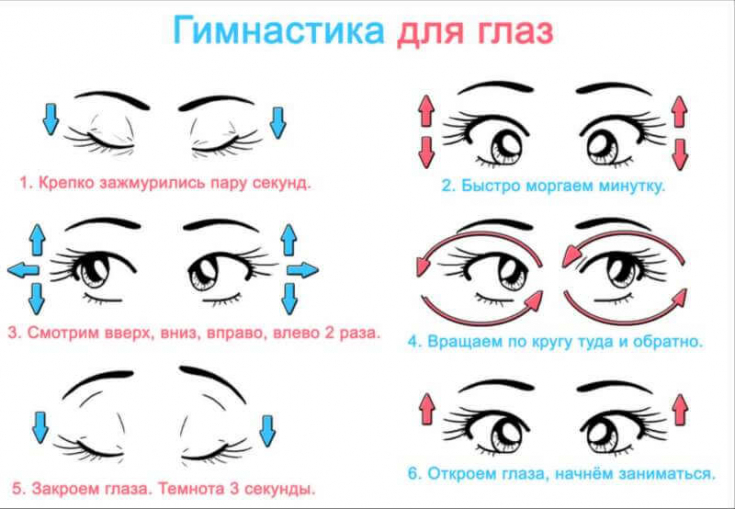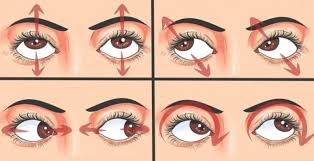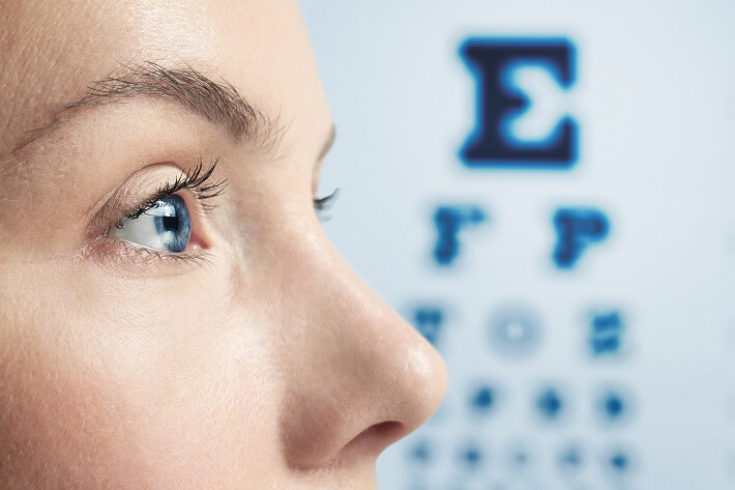Yoga for the eyes – a set of exercises that have come down to us since ancient times. Yoga does not lose its relevance in the modern world, because it has undoubted benefits. Including – and for vision. Few people know that with the help of practices you can increase visual acuity, prevent negative changes due to working at a computer, this is an excellent prevention.
The editors of estet-portal.com offer you a set of exercises that will help improve your eyesight and relax after a hard day's work.
- Yoga for the eyes: benefits and features of practice
- Yoga for the eyes: exercises to improve vision
- Yoga for the eyes: useful for vision asanas
Yoga for the eyes: the benefits and features of the practice
In yoga practice the human eye is perceived as an organ that can heal itself. And special exercises will help him in this. The constant repetition of specific movements helps to engage the various parts of the brain responsible for eye health. Regular implementation of practices over time will give tangible results. "Side effect" exercises – peace of mind, peace of mind, stress reduction.
Subscribe to our Facebook page!

With the help of yoga, diseases such as myopia, hyperopia, strabismus can be overcome. But it is important to fulfill a number of conditions:
1. You need to practice every day – you will need a maximum of half an hour. Classes can be held not only in the apartment, but also in nature during the warm season.
Subscribe to our page on Instagram!
2. Follow proper nutrition – without a balanced diet, yoga will not be productive. Include in the diet vitamins for vision, blueberries.
3. Relax – eyes need rest, so after work do not sit in front of the computer or with the phone. This greatly overloads the eyesight.
Read also: Yoga in hammocks: spiritual and physical practices at their best.
Perform the exercises in silence or to unhurried meditative music. It will help you relax, do everything slowly, tune in for the good.
Yoga for the eyes: exercises to improve vision
In yoga there are a number of exercises designed specifically to improve vision, increase its sharpness. It is important to strictly follow the algorithm for performing each exercise – only in this way will you achieve a positive effect.

We invite you to familiarize yourself with a set of practices that are useful for vision:
1. Trataka. Place a lighted candle at a distance of 30-50 cm from the face. Focus your attention on the flame, unload your thoughts. You need to look at the flame until tears appear in your eyes. Instead of a candle, you can take any point in the house, observing the distance indicated above. Exercise relieves eye strain, fights stress.
2. Buddha Gaze. Lie down with your back straight and relaxed at the same time. Take a deep breath, and then as you exhale, look at the tip of your nose. Hold your breath for as long as possible. As you inhale, look from your nose to any object in the room. Repeat five times.
3. Bhrumadhya Drishti. Look at an imaginary point between the eyebrows, stay in that position for a few seconds, then look at any other object. Repeat several times.
4. Drawing with eyes. Starting position – sitting. Take a deep breath and exhale slowly, close your eyes. Mentally begin to draw shapes, spirals, a question mark with your eyeballs. You don't need to roll your eyes too hard. Do this exercise for five minutes daily.
Read also: Yoga: exercises – how it works and the execution technique
As you can see, there is nothing complicated in yoga for the eyes, it will not take much time, but it will bring undoubted benefits. Including – it will be useful for people who are daily stressed at work. Any yoga exercise will help you relax and get rid of
bad thoughts.
Yoga for the eyes: asanas for eyesight
There are asanas in yoga,
which will be useful for improving vision. They will help restore vision, so do not be lazy to include them in your daily exercise.

Asanas to improve vision:
1. Uttanasana or tilt to the feet.
In addition to a positive effect on vision, this pose helps to get rid of aggression and depression. From the first time, it is difficult for an unprepared person to perform an asana perfectly. However, everything comes with time. Starting position: standing, legs together. Take a deep breath, hold your breath for 5-10 seconds and bend down slowly, trying to reach your feet. After a few seconds, as you exhale, return to the starting position. Repeat five times.
2. Halasana or plow pose.
It is often used if there are problems with the spine, for example, osteochondrosis. Starting position: lying on the floor, hands are straight and thrown behind the head. Raise your legs and at a 90-degree angle, begin to throw them over your head so that your feet come close to your hands. Everything should be done smoothly.

Please note
that the second exercise should not be done by people suffering from cataracts or glaucoma. But with nearsightedness or farsightedness, it may well help. Such yoga for the eyes requires regular performance – only then will the result be noticeable. Read also: Proper breathing and its impact on health
See more important and useful information on our YouTube:








Add a comment